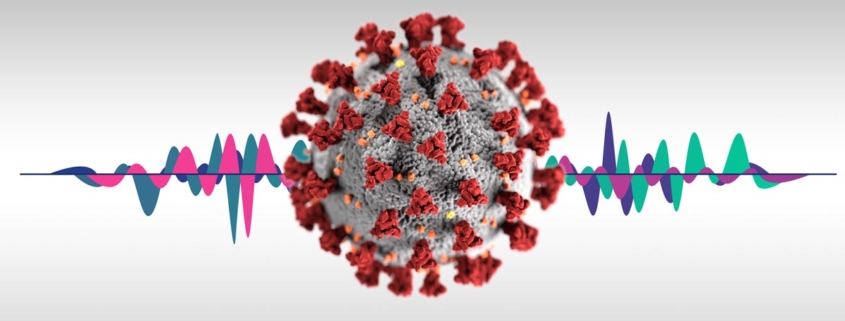Covid test: voice analysis is more reliable than nasal swabs
Covid can be detected directly by voice using a mobile phone and artificial intelligence. The confirmation is supported by the study by a group of Italian researchers, published at the end of November by the scientific journal Journal of Voice after the usual peer review. The antigenic nasal swab – the rapid pharmacy in short – has a false negative rate of 20-30%, as pointed out a few months ago by Giovanni Maga, virologist, director of the Cnr of Pavia.
“Even a research from MIT in Boston has estimated that nasal swabs have an average accuracy level between 40% and 86%, while our system reaches 90%; and in the future we will do even better thanks to machine learning. , that is the automatic learning of artificial intelligence “, explains to Italian Tech, Giovanni Saggio, professor of electronics at the University of Tor Vergata.
In the world there are already at least five or six realities that are focusing on the voice as a screening tool for various pathologies. The Italian research Machine Learning-based Voice Assessment for the Detection of Positive and Recovered COVID-19 Patients is however based on a patent and on the work carried out by doctors and specialists from academic institutions such as Tor Vergata and Pavia, and hospitals, including the IRCCS Policlinico San Matteo and the Castelli Hospital ASL Rome 6.
“I don’t like to use the term diagnostic”, Saggio underlines, “What the algorithm developed by me and my engineering colleagues highlights as screening, then becomes a diagnosis only later because in our group there are also several specialist doctors including Professor Antonio Pisani , head of the Research Center for Movement Disorders of the Mondino IRCCS Foundation and full professor of Neurology at the University of Pavia. We limit ourselves to detecting those anomalies in the voice that make it clear if you are healthy, infected with Covid or suffering from long Covid ” .
In practice, by recording the voice of a person it is possible to analyze three domains: variations over time, variations in frequencies and queries, or how frequent are the frequencies. “The analysis makes it possible to highlight certain characteristics compared to others, such as the fundamental frequency, harmonics, the signal / noise ratio up to 6370 elements. Well, those that interest us and are subject to variations in relation to Covid or other pathologies are at most thirty “, explains the expert.
Artificial intelligence algorithms actually extrapolate key parameters and their relationships from an audio recording. After that it is possible to establish a reliable percentage of positivity and negativity to Covid. “Not only that. We were also able to detect the side effects that occur in the recovered. Especially since the hospital in Padua following ultrasound analyzes identified three sub-groups for the recovered: subjects with fibrosis and pulmonary involvement lower than 3%, 20% and 50%. We are talking about scars that can be reabsorbed in weeks, months or more time “.
One might wonder how it is possible that the voice can be conditioned by a pathology; the answer lies in the elements that contribute to the emission of sounds. Think of the entire respiratory system and also of the muscle components involved. A bit like understanding from the cough if your child has bronchitis or a common cold. “In 2009 I started studying the subject with Indian colleagues, focusing on yellow fever and tuberculosis. I never continued with Parkinson’s, dysphonia, dysphagia and now Covid. All pathologies that are reflected with more or less evident signals in the voice and in the hierarchical weight of those thirty key parameters identified. For example, subjects afflicted with Parkinson’s have no evidence in the airways but indirectly the muscular part conditions the breath with a recognizable pattern “.
In the initial phase of the research, professional microphones and recording systems in a controlled environment were used to obtain high-resolution audio samples. This made it possible to identify the useful parameters to be explored (in fact, the Trentino one); after which a common smartphone was used and it turned out that the yield was more than adequate. The user is asked to sit down and place the smartphone on the table at home, proceed with the recording by reading two proverbs and a series of sustained vowels, cough and finally send everything. “From the 210 cases in the study we have now quadrupled and the more they increase over time, the more accurate our system will become,” says Saggio.
“The game is played by combining different artificial intelligence algorithms, mixing them in short. Then machine learning corrects the shot when faced with any errors.”
Obviously the topic of Covid variants is crucial. “We are investigating, but we can already anticipate that the system continues to work. Simply the weight of the parameters is slightly different”, assured the specialist.
The research and the results achieved would not have been possible without the contribution of the startup spinoff of the VoiceWise university, founded by Professor Saggio himself. In fact, both the web-app and the cloud solution were developed here, which allows the management of audio files, the intervention of artificial intelligence, the screening and distribution of the results; all in encrypted mode and in full compliance with privacy regulations. “On the cloud, each file corresponds to an encrypted alphanumeric code, there are no references to the identities of the patients”, concludes Saggio. “However, we are already working on the development of an app for Android and iPhone smartphones. We are only waiting for the CE certification and for that as a medical device”.



Lascia un Commento
Vuoi partecipare alla discussione?Fornisci il tuo contributo!